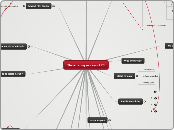The amazing success of PC
History
People influenced by PC
Vandana Shiva
Charles Eisenstein
Rob Hopkins
Courses
definitions
Leaders and key people
Uk people
Patrick Whitefield
Aranya
Andy Goldring
Maddy Harland
John D. Liu
Peter Bane
Johnny Appleseed
(Ethan Roland)
Albert Bates
Ben Falk
Mark Shephard
sepp Holzer
How Permaculture Can Save Humanity and the Earth, but Not Civilization
https://www.youtube.com/watch?v=8nLKHYHmPbo
talk 2
Published on Jan 6, 2013
Modern agriculture, industry and finance all extract more than they give back, and the Earth is starting to show the strain. How did we get in this mess and what can we do to help our culture get back on track?
The ecological design approach known as permaculture offers powerful tools for the design of regenerative, fair ways to provide food, energy, livelihood, and other needs while letting humans share the planet with the rest of nature. This presentation will give you insight into why our culture has become fundamentally unsustainable, and offers ecologically based solutions that can help create a just and sustainable society.
This is the sequel to Toby's popular talk, "How Permaculture Can Save Humanity and The Planet, but not Civilization."
David Holmgren
Bill Mollison
Geoff Lawton
pc as Trojan horse ?
Future Permaculture in Britain
landscape design
Who is WDA?
A practice with one overriding passion: the celebration of landscape as foundation of culture, life-support system and ever changing canvas on which our history, present and future are and will be painted.
Simon J Watkins has 15 years' experience in landscape consultancy, including award winning public landscapes, sustainable drainage, forestry, community projects and gardens. He is experienced in design and delivery of water sensitive landscape and edible landscapes, being a regular contributor on permaculture to the LI CPD programme. He has worked in the education, infrastructure, leisure, community regeneration and residential development sectors. WDA offers a professional and personable service, aiming to understand your needs and find the most effective and sustainable solutions to the challenges of your landscape.
beyond PDC design
ecological landscaping
Simon J Watkins
Erik Ohlsen
Toby Hemenway
MJW
's PC
creating microclimates
obtain a yield
build humus and fertility
hugelkuttur beds
succession planting
dense planting
vertical gardening
water harvesting
one element, many uses
chop and drop
perennial veg
polyculture
soil science
compost
no dig
hugelkultur
principles and ethics
whos in charge
organisational structure
"Multi-Tiered Organizational Structure
For us to be effective as Permaculturalists, we must be coherent in our communication and organization. But, we must also maintain the independent and decentralized spirit in which Permaculture was conceived. This model presents five tiers of organizational structure, focusing on the first three: Local, BioRegional, Regional, (Continental, and Global). Groups at each level maintain their independence; the higher levels of organization simply provide us with a way to communicate and cross-pollinate on a larger scale".
extract from Ethan roland
see principles
Resilience articles
4
3
2
l.
Macro to micro
balcony, patio
Melbourne garden
Loess Plateau
Orgs and groups
city and urban PC
Urban Agroecoloy: 6,000 lbs of food on 1/10th acre
Interview w GL
Achievements
community enterprises
Established farms
Kris Holstrom's
Kris Holstrom's off-grid permaculture farm at 9000 feet high is living proof that food can be grown nearly anywhere.
Quail Springs
http://www.resilience.org/stories/2010-11-12/mark-shepherds-106-acre-permaculture-farm-viola-wisconsin
Sepp Holzer's
Ben Falk's
Zaytuna
outreach
Jordan
Africa
Cuba
Why we need PC
Subtopic WHEN AGRICULTURE STOPS WORKING: A GUIDE TO GROWING FOOD IN THE AGE OF CLIMATE DESTABILIZATION AND CIVILIZATION COLLAPSE









